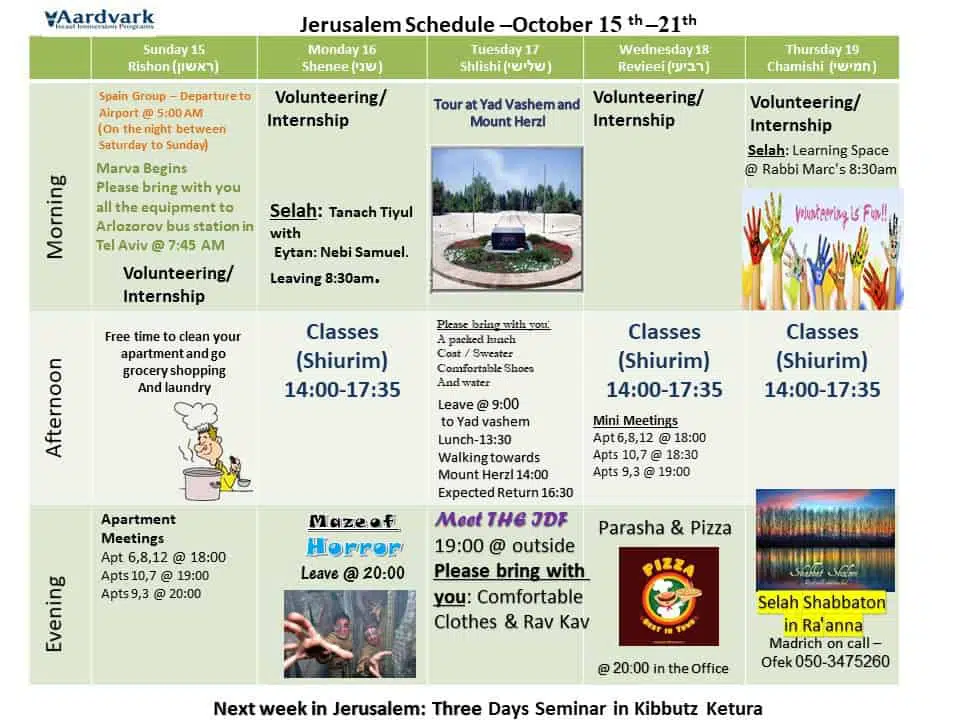Moadim L’Simcha!
We began Sunday bright and early attending Birkat Kohanim, The Priestly Blessing or Priestly Benediction, (Hebrew: ברכת כהנים). In rabbinic literature the practice is also known as the raising of the hands (Hebrew Nesiat Kapayim), or Dukhanen (Yiddish from the Hebrew word Dukhan, platform, because the blessing is given from a raised rostrum). It is a Hebrew prayer that was recited by the Kohanim, the priests in the temple. According to Torah, they are descendants of Aaron the first High Priest and older brother of Moses, the priests were chosen by God to work in the Tabernacle and assist the Israelites in blessings, ministering, sacrifices and atoning for their sins to God, for all eternity.
Even after the destruction of the second Hebrew Temple in Jerusalem, the practice has continued in Jewish synagogues, and today in most Jewish communities. The Kohanim bless the worshippers in the synagogue. We were at the Kotel with at least 5,000 other people who also came to experience the blessing.
In the afternoon the students went to ulpan class where they watched Ushpizin (a Sukkoth movie).
On Monday evening, we went to the Moshav Festival and listened to amazing Israeli music, met hippies, saw Israeli artists selling their art, and so much more. It was a really incredible night and we can’t wait to go to the next one around Passover time.
On Tuesday we toured Abu Ghosh, an peaceful Arab village just outside Jerusalem.
We started with a visit to a monastery where we met with a very special man, Brother Olivier, a monk who has celebrity status in Israel. He educates soldiers about Christianity. Brother Olivier moved to Israel from France in 1977 after Paul Newman inspired him in the movie Exodus and he has not looked back. His English is very good, although his Hebrew is much better. Brother Olivier had the students mesmerized.
We then walked to a brand new Mosque that opened just one year ago. The students were pleasantly surprised at how beautiful it was. We spoke to the Imam of the Mosque and he answered some of our questions.
We continued on to a lookout from where we could see all of Abu Gosh. While we were there, our tour guide Tanya told us the history of the village. It was a beautiful view and it was great to get a better understanding of the real conflict happening in Israel.
For lunch, we went to THE BEST Hummus restaurant where we enjoyed a delicious ethnic lunch. Tourists and Israelis alike come from all over to eat there. We ate hummus, falafel, salads, and more and all left satisfied and full to the brim. Everyone took hummus to go because it was just that good!
For our last stop, we visited the family of Youssef Ottman who was killed last month in a terrorist attack at Har Adar. His father spoke to us about his son and showed us photos. We were able to pay our respects and it was a very moving visit.
It was all around, our best trip yet.
Ricky Studencki said:
“During this trip, the highlights were going to the Hummus restaurant and the family of Youssef Ottman. The hummus place was definitely a high as we got to taste local cuisine in a local restaurant. Also, we got unlimited pita, hummus, falafal, salad too, which made all the students happy. Furthermore, visiting the family was an eye-opening experience, seeing up close how the security situation effects Israelis around the country. What was moving, despite the loss of a son, the family had stayed strong and soon his younger brother will be drafted to a combat unit.”
This week on Selah we visited Neot Kdumim, a captivating site of agriculture and plants based on ancient Israelite traditions. One of the highlights is their Succah exhibit. They have built around 30 different sized Succahs from the smallest to the tallest, 2 stories, round ones, triangle ones, etc. They even have one on a boat and one on a camel! All of the Succot displayed are based on the first few chapters of the Mishna and the group were able to connect with an 1800-year-old text and see it come to life. Rabbi Marc led a discussion about Jewish law, specifically on the focus it gives to dimensions and details and how to find inspiration in it all.
This week Parsha and Pizza should have been named Succah and Quiche – we sat in the Aardvark Succah and were treated to quiche, lasagna and pasta whilst exploring the theme of happiness with Rabbi Marc. We got to hear all about the book of Kohelet, Ecclesiastes, and learnt the story of King Solomon’s quest to find meaning in life. It was a very provocative conversation and everyone was invited to think about what makes us happy and if happiness is something real or achievable. We finished off by playing some contemporary pop songs and music about happiness before Rabbi Marc taught the group about the value of the Succah.
Again, due to the holiday, it has been another short week, but we are looking forward to celebrating Simchat Torah all over Israel, and next week resuming our internships and really getting to know more of Israel and seeing and living the history.


















